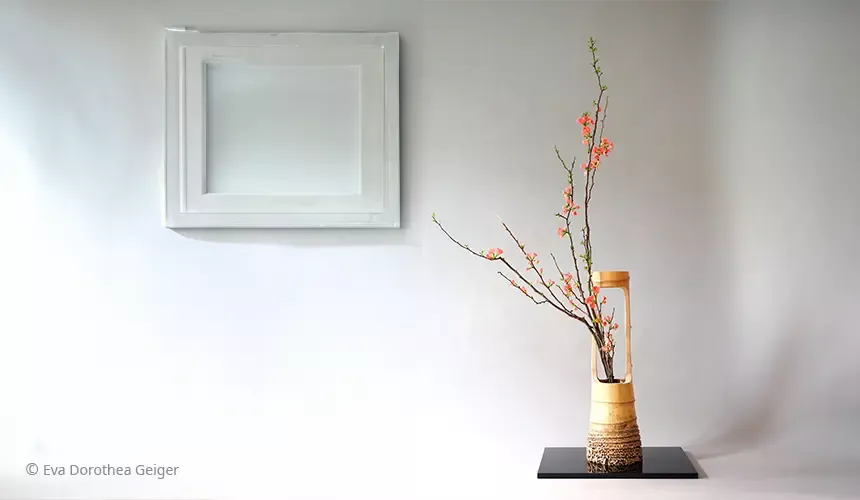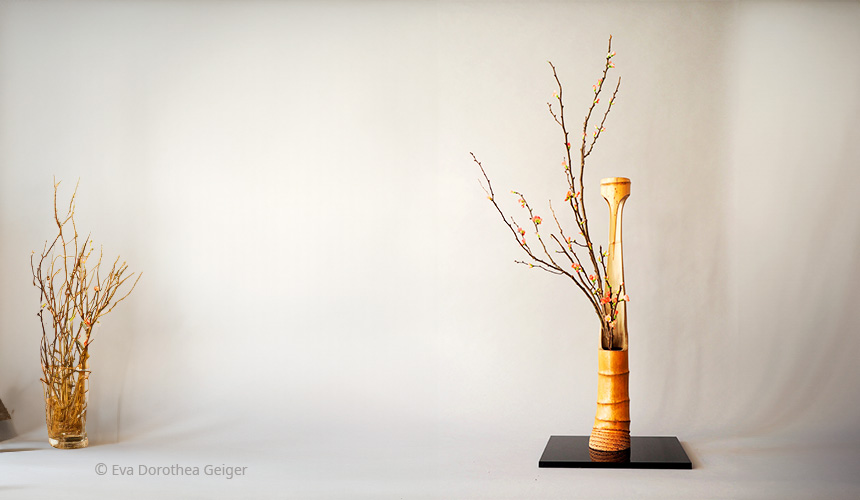
The ornamental quince (bot. Chaenomeles) belongs to the rose family (Rosaceae). This plant genus is native to East Asia (Japan, China, Myanmar) and comprises five species. Their flowers are white, salmon-coloured or even red and have a wonderful fragrance. They enrich any garden or park, especially in spring, giving it an Asian ambience. The striking flowers attract bees in particular, but the fruits that appear later are also edible. Quince is one of the most popular ornamental shrubs in gardens and parks. Of course, they are pruned in late winter or early spring and can therefore be enjoyed very early in the year.
In the example Ikebana, the quince was arranged in an ichijugiri bamboo vase in the form of an ichijuike arrangement.
The ichijuike arrangement is a classic form of ikebana The name "ichijuike" literally means "one flower or one type of branch" and describes the minimalist nature of this art form.
Unlike more complex ikebana arrangements, which can contain multiple flowers and branches, the ichijuike arrangement focuses on the beauty and simplicity of one type of flower or plant. This minimalist aesthetic reflects the principles of Zen Buddhism and emphasises the beauty in the mundane and the simple.
The choice of flower or branch for an Ichijuike arrangement is of great importance. It should not only be beautiful, but also have a special meaning or symbolism. Popular options include quince, magnolia or cherry blossom for spring, iris for summer or maple for autumn.
The flowers or branches are arranged with great care in order to achieve a harmonious balance and an aesthetically pleasing composition. The placement in the container is taken into account as well as the shape and lines of the branches or the flowers themselves.
The Ichijuike arrangement is worked in a classic bamboo vessel, in which it is fixed with a hana-kubari. It is a simple yet elegant way to honour the beauty of nature and create an atmosphere of calm and serenity. The flowers/branches are either displayed completely in the 'bamboo window', or Shin and Soe protrude a little beyond it while Tai remains in the window. In the third variant, Shin and Soe protrude beyond the vessel by a factor of almost 1, while Tai remains in the window.
Quince is also suitable for henkakei shōka shōfutai in a vessel called tsūrū (crane vessel). It is very popular for this type of shōka as it can be bent very easily, which is an advantage for this form of shōka.
The Ichijuike is an artistic representation of Japanese aesthetics and philosophy. It invites us to discover the beauty in simplicity and to accept the transience of life. It is a reminder that even a flower or a plant has the power to bring joy and inspiration.